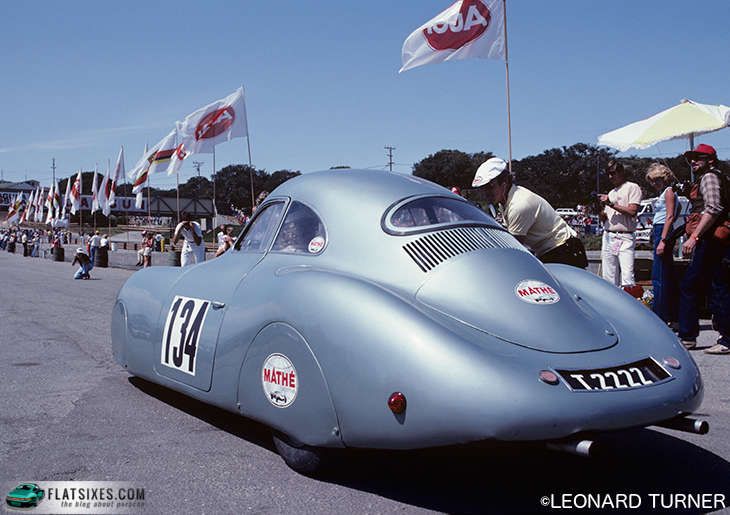The Monterey Historics Porsche tribute in August of 1982 provided a notable chance to see many famous Porsches and famous Porsche drivers, but was unique for me in its opportunity to see the only remaining Type 60K10. Porsche had, in the 1930s, already designed and proposed production of the VW based Type 64 sports car, only to be turned down by the German government. Soon after, though, that same government wanted a car to run in a politically important 800 mile long race between Berlin and Rome and turned back to Porsche.

Leveraging the work done on the Type 64, three aluminum Komenda bodied 60K10 specials were produced with improved valving, dual carburetors, increased compression and more than double stock horsepower. The race never materialized because of the war, and the three went their separate ways to separate fates. One of the cars was wrecked during WWII by Bodo Lafferentz, a German official, and disappeared; the other two remained in Porsche hands. One of these was used extensively for personal high speed transport by Professor Ferdinand Porsche, the old Professor and his chauffeur once famously averaging 85 mph on a run between Fallersleben and Berlin. Unfortunately, after WWII, the second car was abused and basically destroyed by some of the victorious troops, leaving only this one.
A well-known Austrian racer, Otto Mathé, came into possession of the car in 1949: “I purchased directly from Professor Porsche,” he recalled. One armed, Mathé converted his new car to right-hand drive to accommodate shifting with his remaining left arm, and enjoyed considerable racing success with this unique machine (which in spite of the narrow cabin is actually a two-seater, with the passenger sitting somewhat behind the driver). Mathé graciously spoke with Panorama, although he had little English, and let us do a number of pictures of his car, inside and out. As far as I know, this was the only time he or the surviving Type 64, as it is internally referred to within Porsche, were ever in this country. After his death in 1995 the car became the property of the “Society of Friends of Historic Automobiles,” and Porsche created the handmade aluminum shell that graces their museum in Zuffenhausen today.
Other than the rear view shown here, one of my favorite images from that day in 1982 was of this machine close behind Porsche #1, driven by Wolfgang Porsche, hovering like some spectral ancestor. Which in a real sense, of course, it is.
